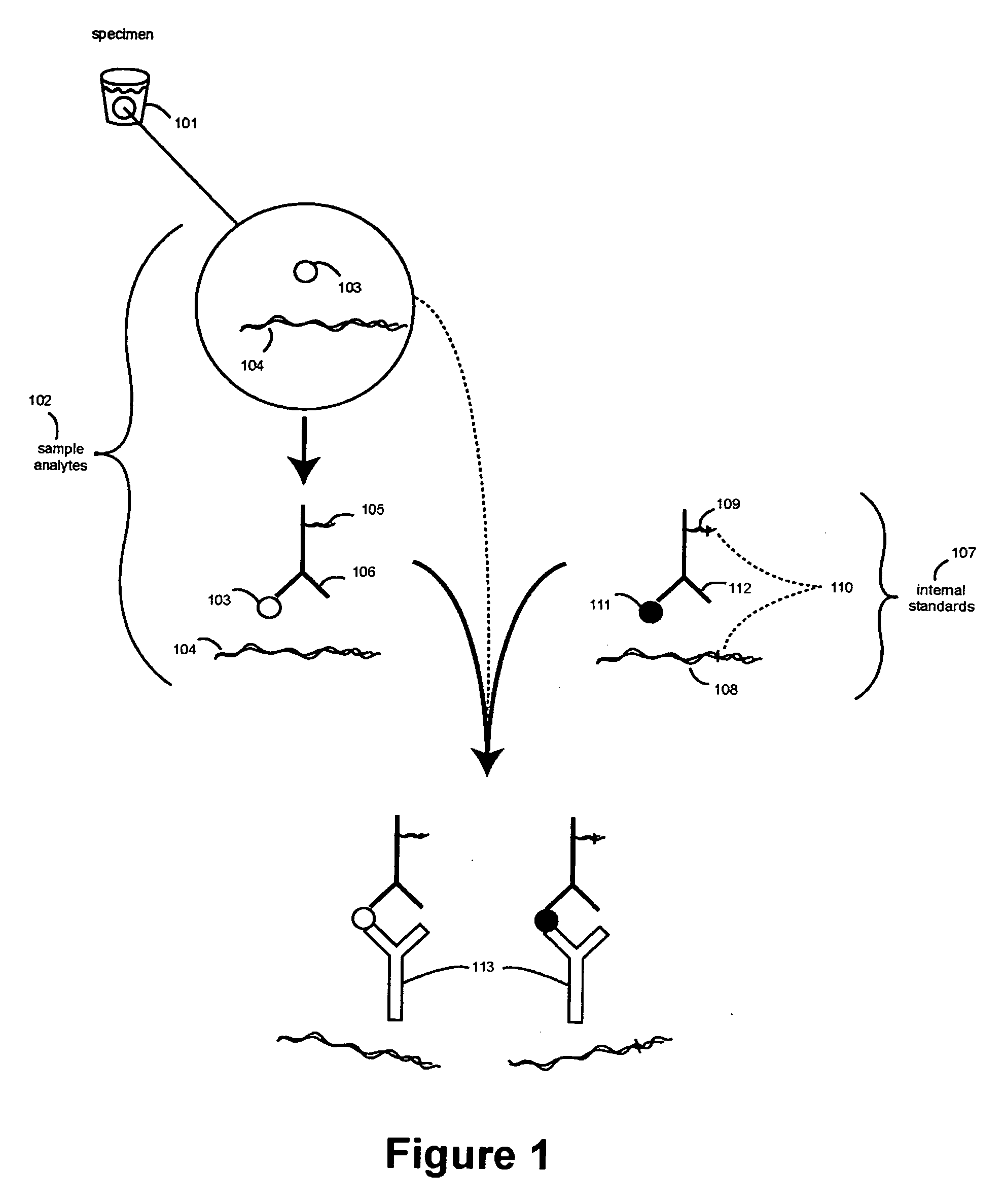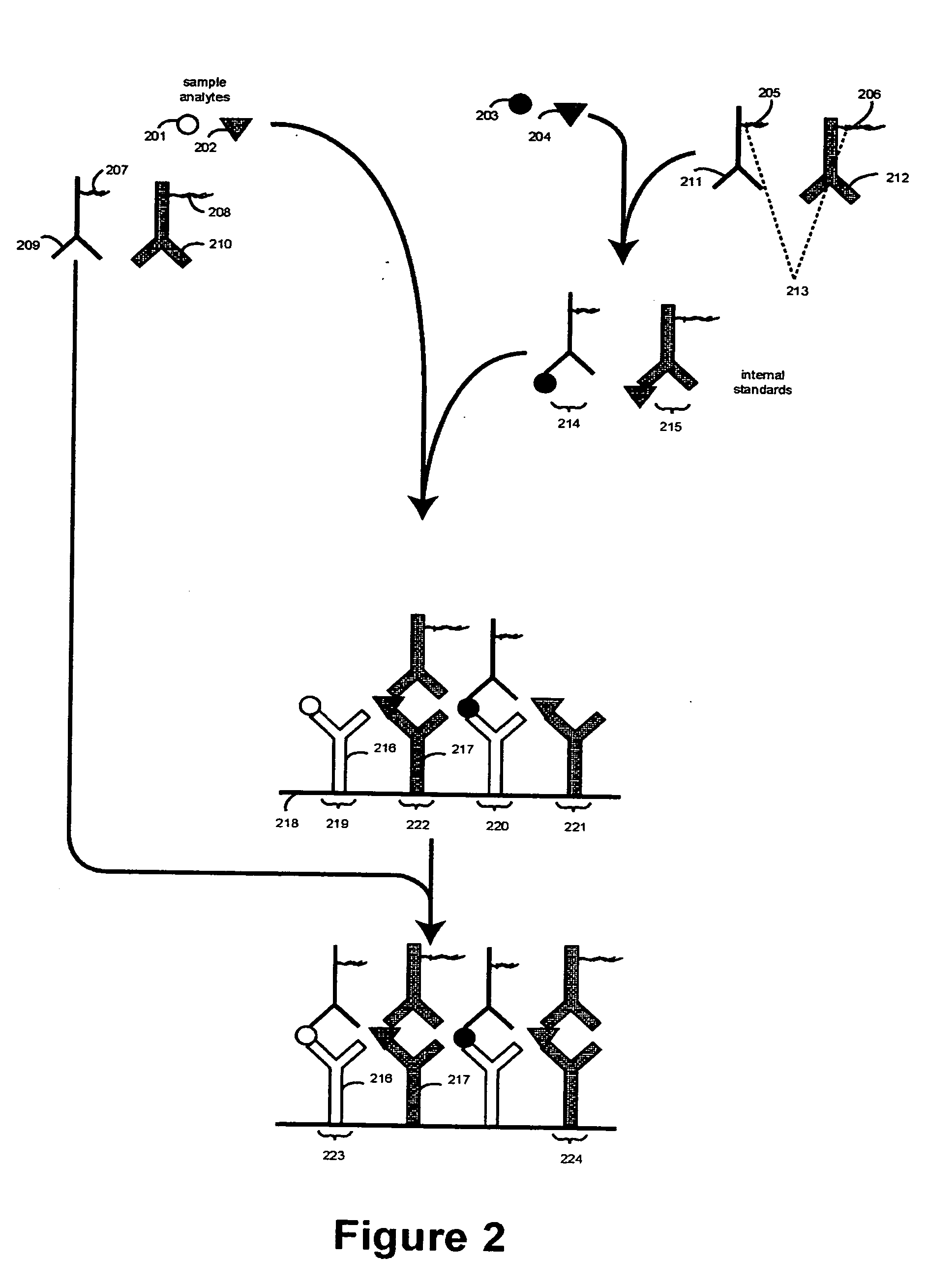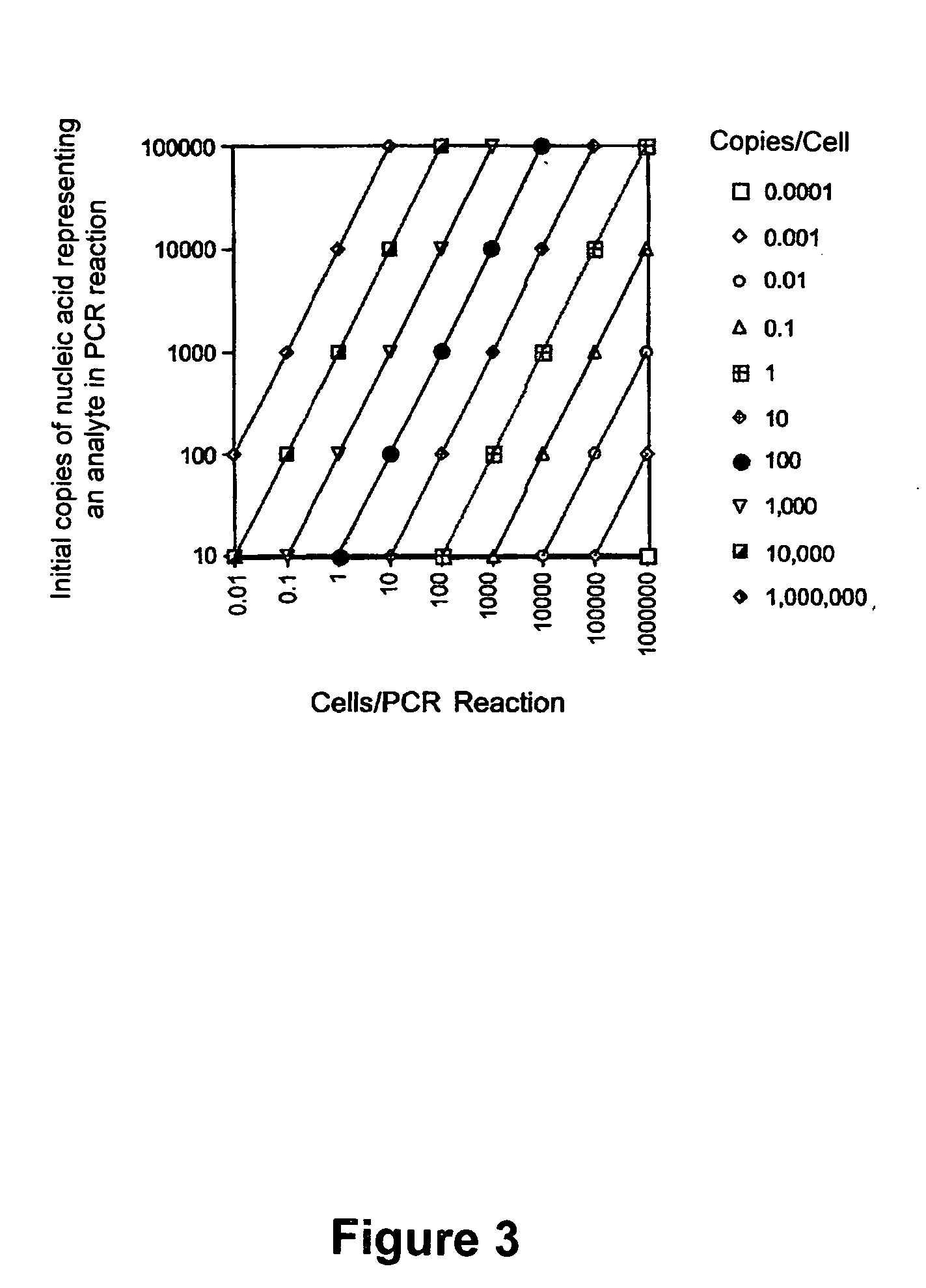Methods and compositions for assaying analytes
a technology of assaying analytes and compositions, applied in the field of methods and compositions for assaying analytes, can solve the problems of a relatively slow development of this method, and achieve the effect of improving the accuracy of assaying results
- Summary
- Abstract
- Description
- Claims
- Application Information
AI Technical Summary
Benefits of technology
Problems solved by technology
Method used
Image
Examples
example i
[0302] The Following Example Illustrates Assaying Carcinoembryobic Antigen (CEA) with α-Fetoprotein (AFP) as a Reference, in Accordance with Some Embodiments of the Invention
[0303] Preparation of Immobilized Receptors on a Thermocycler / Immunoassay Plate
[0304] Monoclonal antibodies for CEA (anti-CEA) and AFP (anti-AFO) can be used as receptors for CEA and AFP sample analytes, and their corresponding internal standards. The high affinity monoclonal antibodies (mAbs) are commercially available from Fitzgerald Industries International Inc. (Concord, Mass.). The mAbs for CEA and AFP can each be diluted in carbonate-bicarbonate buffer (Sigma C3041) at 50 μg / ml and applied to wells of the first row of three TopYield strips. The mAbs can be serially diluted (1:2) down each column and the last row left containing only buffer. The mAbs can be allowed to bind to the plate by incubating overnight at 4° C.
[0305] The wells can be washed three times with Phosphate Buffered Saline, pH 7.4 (Sigma...
example ii
[0320] The Following Example Provides Additional Details of an Overall Process of Evaluating Gene Expression Measurements that can be Used with Some Embodiments of the Instant Invention
Materials
[0321] 1. Standardized RT-PCR reagents, including primers and standardized mixtures are purchased from Gene Express, Inc. (GEI, Toledo, Ohio). [0322] 2. Buffer for Idaho Rapidcycler air thermocycler: 500 mMTris-HCl, pH 8.3, 2.5 μg / μL, BSA, 30 mMMgCl2 (Idaho Technology, Inc., Idaho Falls, Id.). [0323] 3. Buffer for block thermocyclers, Thermo 10×, 500 mM KCl, 100 mM Tris-HCl, pH 9.0, 1.0% Triton X-100 (Promega, Madison, Wis.). [0324] 4. Taq polymerase (5 U / μL), Moloney Murine Leukemia Virus (MMLV) reverse transcriptase, MMLV RT 5× first strand buffer: 250 mM Tris-HCl, pH 8.3, 375 mMKCl, 15 mM MgCl2, 50 mM dithiothreitol, oligo dT primers, Rnasin, pGEM size marker, and deoxynucleotide triphosphates (dNTPs) also are obtained from Promega. [0325] 5. TriReagent is obtained from Molecular Resear...
example iii
Blinded Inter-Laboratory Study to Evaluate Reproducibility
[0367] In a first study, six laboratories participated in triplicate measurement of five genes in cDNA derived from a bronchogenic carcinoma tissue sample 16009T. A variety of electrophoresis methods and imaging software programs were used in different laboratories to analyze amplified product. Study 1 Laboratory 2 used an Agilent 2100 Bioanalyzer. The intra-laboratory average CV for all gene expression measurements was 0.36, which is comparable to that previously reported (Willey et al, 1998; Rots et al, 1999; Rots et al; 2000; Mollerup et al, 1999; Loitsch et al, 1999). The inter-laboratory variation showed an average CV of 0.71.
[0368] In a second study, slab gel electrophoresis and NIH Image software was used to measure expression of 10 genes (the 5 previously measured plus 5 additional genes) in A549 cDNA. Four of the original laboratories were able to participate in the second study. The combined average CV for all ni...
PUM
 Login to View More
Login to View More Abstract
Description
Claims
Application Information
 Login to View More
Login to View More - R&D
- Intellectual Property
- Life Sciences
- Materials
- Tech Scout
- Unparalleled Data Quality
- Higher Quality Content
- 60% Fewer Hallucinations
Browse by: Latest US Patents, China's latest patents, Technical Efficacy Thesaurus, Application Domain, Technology Topic, Popular Technical Reports.
© 2025 PatSnap. All rights reserved.Legal|Privacy policy|Modern Slavery Act Transparency Statement|Sitemap|About US| Contact US: help@patsnap.com



